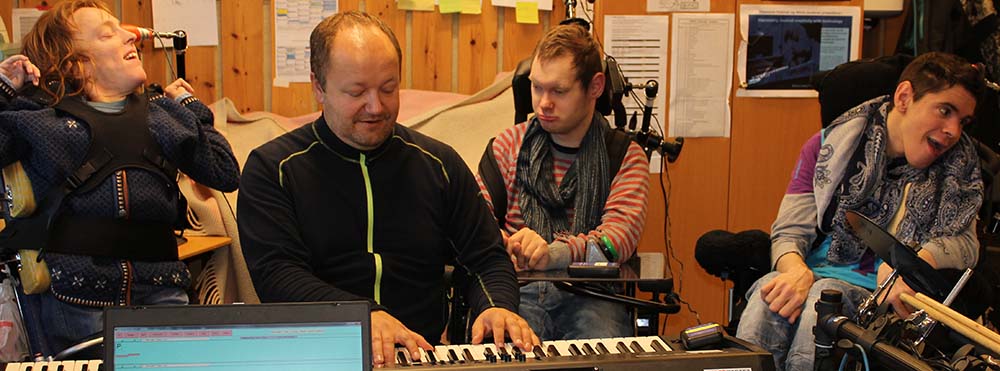
The University of York has a long association with Music Technology having been one of the first UK academic establishments to recognise the emerging discipline. Based within the Department of Electronics, the BEng and MEng courses in Music Technology have gone from strength to strength, offering fully accredited, core engineering pathways to students who have gone on to become the designers and programmers of tomorrow’s systems.
In 2010 the Department replaced their MIDIcreator kit with multiple Ensemble systems, specifically for teaching on the new BSc course. We spoke to Head of Department David Howard and senior lecturer Dr Andy Hunt to find out why.
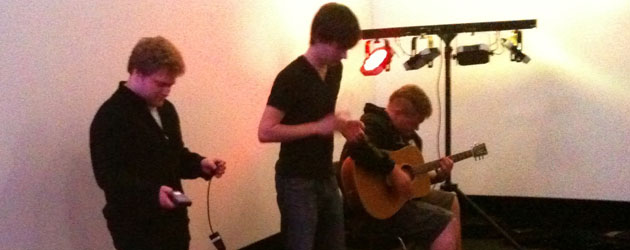
The BSc course contains more overtly creative elements in terms of assessed units. Informed by the research interests of the department, one of those creative assessment tasks involves the analysis and synthesis of vocal sounds. Students have to record and then analyse their own voices. They then create a vocal synthesiser using Pure Data (Pd) - an open source, real-time, graphical programming software language. That, in itself, presents a formidable challenge but it’s not the end of the story. Course leader Professor David Howard explains:
“The really creative part of the assignment is to take the Apollo Ensemble kit and use that as the controller for their synthesiser. As a group of three or four, they have to produce a three minute piece of live music performance, where the vocal output from their synthesiser has to dominate the piece. They are allowed to use a MIDI sequenced backing track or even something live. Then they write the whole thing up in terms of programme notes and technical notes and we put on a concert!”
Choosing which controllers to use is an integral part of the assignment brief and the range available for use with Ensemble proved to be one of the key factors in the University's choice of the system.
“Ensemble was the only device for the job. I’m not aware of anything else. There are other devices that allow you to do odd bits of the work, but what I think the Ensemble system has is an array of different sensors so you can suit the sensor to what it is you’re trying to achieve. You need to give the student the opportunity to select things and have some choice in what they do - rather than give them limited options. That wouldn’t be helping the student to use their creativity to realise a goal.”
Of all the available options, the squeezy controllers (Ensemble Squeeze) proved to be particularly useful in providing continuous, changing control over parameters such as formant frequencies. In addition, David was delighted to discover that the ubiquitous Xbox wireless controller could be used in conjunction with the Ensemble system. “When you look at that, you’ve got something like 10 buttons and two joysticks on one device. That was revolutionary to this project because that meant you could suddenly take one synthesised voice and pretty well control it with just one of those!”
The students clearly took to the software very quickly but it wasn’t just ease of use and the number of available hardware options that appealed to the University - customer support proved to be a deciding factor.
“My experience of working with Mark Hildred and Apollo is that you can ring them up and get an immediate response. They’re very keen to make sure things are working and if you have software problems they’ll talk you through it on the phone.”
By all accounts the project has been a great success. David Howard is enthusiastic:
“We ended up with a piece from each group. They were completely different from each other. We had students dressing up which was really quite wacky - but I like wacky! They all did a fabulous job! I’m sure that all this voice and hearing stuff - whilst it can be very academic - is hugely important. In practice, singing is one of the most expressive instruments you will ever deal with.”
It seems the students are equally unanimous in their enthusiasm for Ensemble and the system is now a firm fixture on the course. David Howard concludes:
“I still believe it’s one of the more creative things we do - which I’m proud of!”
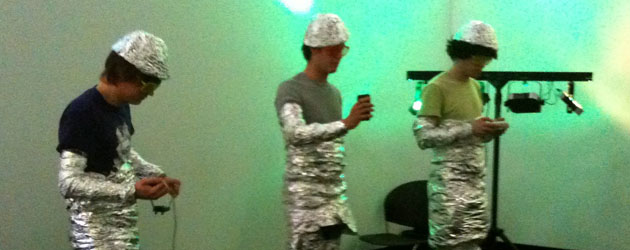
Ensemble has proved to be such an effective system that it is now also incorporated into a 3rd Year module, Interfaces for Audio Interaction. Dr Andy Hunt explains: “It’s essentially thinking about human computer interaction in general, then specifically in music. We go on to examine applications for scientific audio projects. It’s very much state of the art and we’re exposing students to the latest research in this area.”
Following a research-based approached combining lectures and practical lab sessions, students are introduced to sonification - the science and art of making a large volume of data more accessible and more easily understood by converting it to sound. Students approach the assessment work in three phases:
Andy Hunt is clearly impressed: “The physical interaction has been made completely possible and rather seamless by using Ensemble. What it’s given us is the physical configurability to match Pure Data’s software configurability. From the students’ point of view it’s been like sensor Lego - building blocks that are easily assembled. It’s worked incredibly well as we haven’t had any problems with Ensemble - it just seems to sit on the laptop and work.”
Andy is very clear about what sets Ensemble apart and why the system was selected to support the Music Technology courses. “What Ensemble offers, which I think is very special, is the chance to construct interfaces for creative projects without having to be an electronics hobbyist. That for me is the key thing. I’ve seen a lot of other systems but Ensemble is a big leap ahead because it gives you a lot of configurability without any of the pain of having to solder circuits together or having to learn too many protocols. I would absolutely choose Ensemble every time.”
 David Howard
David HowardDavid is currently Head of Department for Electronics as well as leading the Music Technology research group.
 Dr Andy Hunt
Dr Andy HuntAndy is Senior Lecturer in Music Technology and known internationally for his pioneering work on Interactive Sonification - the science of displaying data as sound, with real-time user interaction.
DMX Lighting
Pd Software
IET Lecture: 'Music Technology: Now and in the Future' by David Howard
Report from the 2012 student concert
BSc Music Technology at York
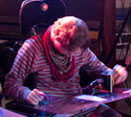
SKUG
Pioneering work from Norway, where SKUG are helping everyone become a musician.
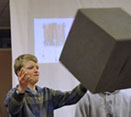
Sensory Extra, AAM
Fun with music & multisensory activities at Sensory Extra Sessions.
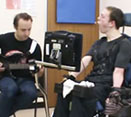
Gordon Parry Centre
Creating music opportunities for all in Leeds.
Site Map